Bukhansan National Park
In South Korea
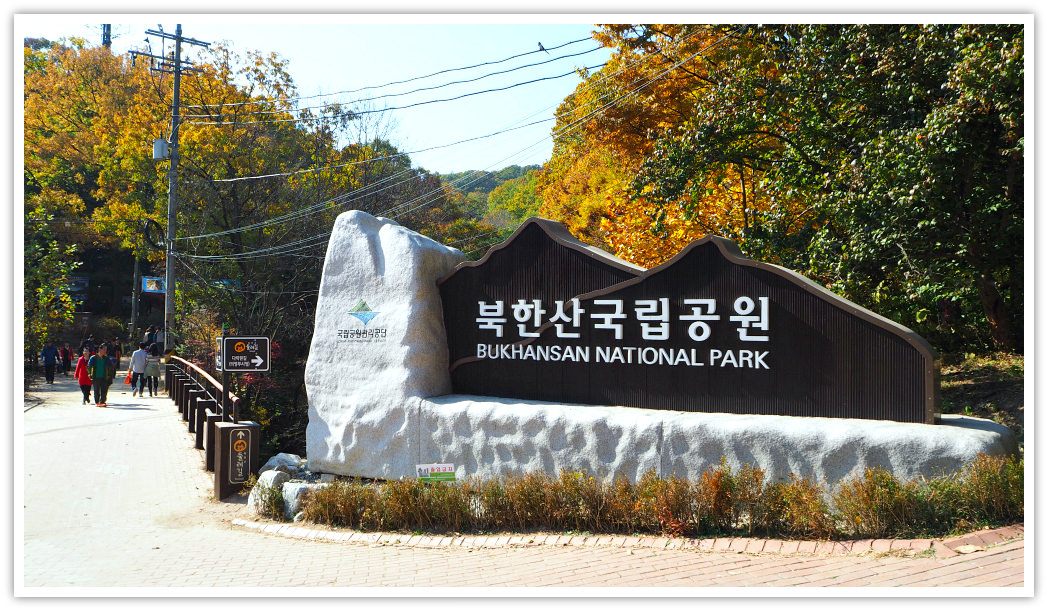 Welcome! Bukhansan National Park
Welcome! Bukhansan National ParkIntroduction
Bukhansan National Park is one of the most attractive parks in South Korea.
This mountain park is a picturesque mountain range located in the north of Seoul, South Korea. It is notable for its dramatic granite peaks and ridges, which are home to numerous cultural and historical sites.
The park's highest peak, Baegundae, stands at 836 meters (2,744 feet) and is one of the most popular hiking destinations in South Korea.
There are also many temples and shrines scattered throughout the park, as well as Buddhist monasteries nestled in the valleys between its mountains.
Bukhansan National Park is also home to rare plant species, diverse bird populations, and other wildlife. Its scenery and beauty make it one of the most beautiful preserved areas in all of South Korea.
Bukhansan National Park is located in Seoul, South Korea and is one of the country's most visited parks. It covers an area of 79 km2 and boasts beautiful granite mountains, valleys, forests, and streams.
The park is home to several historic sites, such as ancient tombs, temples, pavilions, and cultural heritages that make it a popular destination for tourists.
There are a number of interesting features to discover in Bukhansan National Park including Baegundae Peak, which is the highest peak in the park at 836 m above sea level.
Please, continue reading to find more...
bukhansan national park
Bukhansan National Park is a mountain range in Seoul that expands towards Gyeonggi Province. It has been designated as a national park (in 1983) due to its spectacular features and as an ecological treasure.
Bukhansan Mountain has an area of 79.9 square kilometers stretching over Seoul and Gyeonggi-do.
The national park is divided into two areas: Bukhansan Mountain to the south from Uiryeong Pass, and Dobongsan Mountain to the north. This mountain is valuable as it supports over 20 million residents and flora and fauna in it.
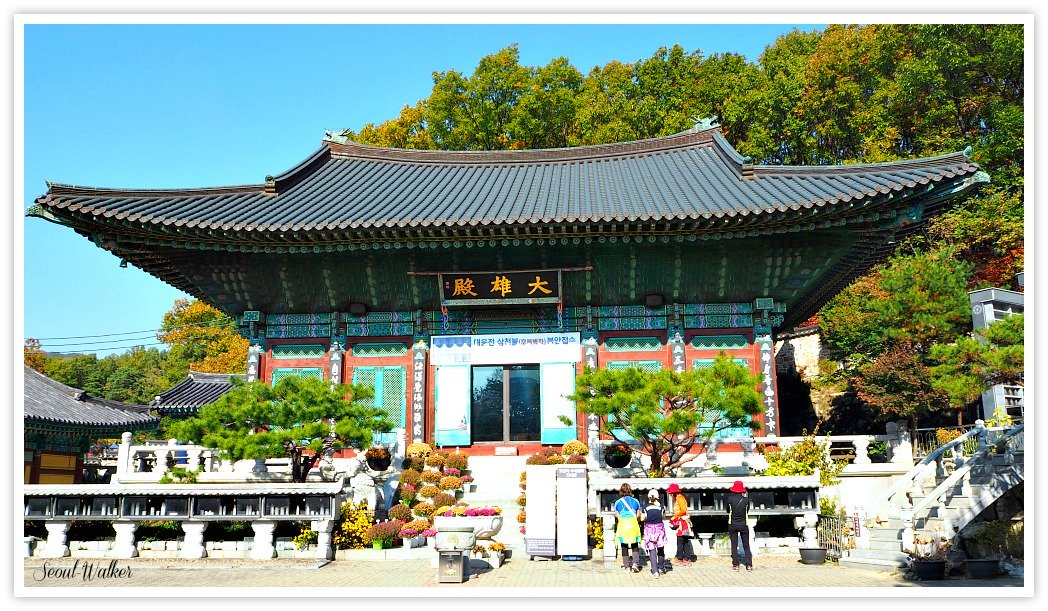
Trivia: Bukhansan supports over 1,300 flora and fauna, and has over 100 Buddhist temples at strategic places.
 Rock formations on Dobongsan Mountain
Rock formations on Dobongsan MountainBukhansan is a favorite mountain among locals who hike (or climb) its spiny, rugged, and challenging but invigorating environment. The park has some gorges, granite summits, and potable fresh streams.
Bukhansan is one of my favorites and one of the mountains I first hike in South Korea. Not only because it has various and fantastic courses but also because I used to live just a few kilometers from its foot.
Exploring the mountain with my colleagues, I learned that doing so is healthy (for both my mind and body) – we usually bring with us lunch box, a bottle of water, an apple or kimbap.
Before I describe further this mountain, let me just briefly introduce in advance the main points of this page. Here they are…
- Mountain peaks at Bukhan Mountain – Baegundae, Insubong, Mangyeongbong
- Historical background
- Hiking trails or courses
- Getting to Bukhansan
- Parking Lots
- Facilities / Fees
Okay… let’s proceed.
The name ‘bukhansan’ was believed to be coming from a place located north of the Han River (or Hanggang) in the late Joseon Dynasty period.
As aforementioned, there are three highest peaks with imposing and glorious presence: Baegundae Peak, Insubong Peak, Mangyeongbong Peak. These three peaks are called ‘samkaksan,’ which literally means the ‘three mountains.’
The number ‘three’ or ‘triangle’ is a very symbolic number that it is being used in Korea’s poetry, triangle-shaped mountains, defense areas in the past.
That number is highly popularized through Korea’s three kingdoms: Baekje, Shilla, and Goguryeo – as popularized in computer games with similar names.
Other spectacular mountains in Seoul which form part of the whole Bukhansan National Park include the mountain peaks of Eunpyeong-gu, Jongno-gu, Seongbuk-gu, Gangbuk-gu, and Deokyang-gu of Goyang City, Gyeonggi-do (Province).
However, specifically, based in Uiryeong, the Dobong-gu, Yangju, and Uijeongbu which belong to Bukhansan National Park are also called Dobongsan (Mountain).
Having such attractive features, Dobongsan Mountain is one of the five famous mountains where ancient rituals were officiated during the Korean dynastic periods. (Story: Dobongsan, one of the most beautiful mountains in Seoul, is one of Seoul’s symbols along with Namsan and Han River.)
Insubong Peak was used to be called ‘Buaak’ Mountain which is thought to be the epicenter of Seoul. However, among the three peaks of Bukhansan National Park, Baegundae (which rises to 837 meters high), and Insubong (811 meters high), particularly belong to Goyang City rather than in Seoul City.
Since we now have a little understanding about Bukhansan National Park, it would be good if we can start looking at the possible accesses to the park with the following trails or mountain courses you will take (hush, you can approach the mountain from almost every point!)…
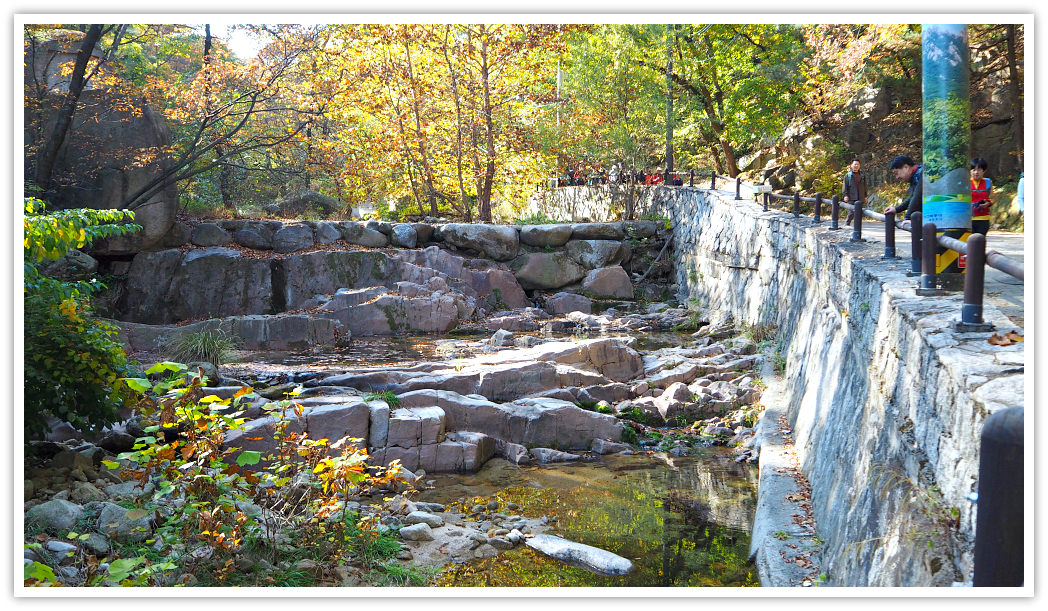 Sparkling stream at Dobongsan
Sparkling stream at Dobongsanintroduction to bukhansan mountain trails
Presuming this is your first time to explore South Korea’s mountains or national parks, you will learn that there are specific trails, or shall I say designated courses or mountain trails, that you can easily follow so that you won’t get lost and fall into dangerous paths.
Korean mountains are easy to explore not because they have those trail pointers but also because many of them have stairs and railings built.
Mangyeongdae (Mangyeongbong Peak) is about 800 meters high. However, to its peak is approximately over a kilometer long. Along with that trail, you will see unusual rock formations such as the Pig Rock, Love Rock (heart shaped-rock), Piano Rock, among others).
To its west, you will see Noryeongbong, Wonhyobong, Yeomchobong, Yeomchobong, Suraksan, Bulamsan, and Cheonma Mountain.
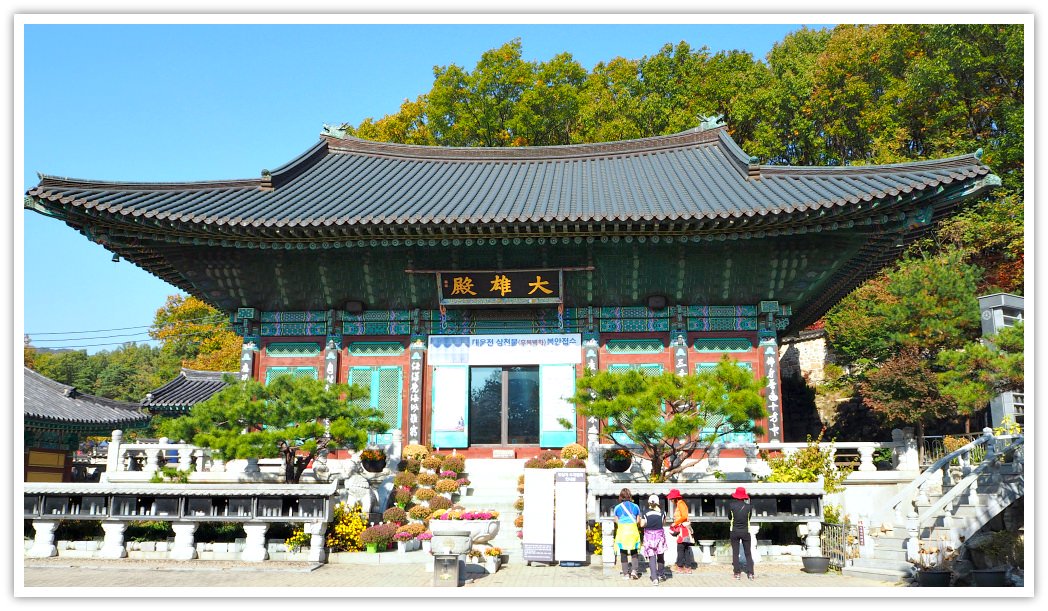 A temple in Dobongsan, Bukhan Mountain Park
A temple in Dobongsan, Bukhan Mountain ParkMountain Trails of Bukhansan National Park
Bukhansan Mountain’s hiking trail is divided into the following section…
Seoul Departure Course Area
This departure hiking course includes the Right-hand Course. This course is created, usually based on the more natural trail as experienced by regular hikers, for Yeongbong (about 600 meters high), Baegundae, Mangyeongdae, and Doseonsaengol.
Baegundae, the most popular one, is about 2.1 kilometers from the parking lot which is next to Doseonsa (Doseon Temple). This is the shortest route you can take for Baegundae Peak.
Once you are on top of Baegundae, where most hikers stop and rest, you should enjoy its height and take advantage of viewing the surrounding spectacular sights as far as your eyes can see. Of course, you can replenish your energy by consuming your prepared food and drinks supplies.
- Baekwoon Navigation Support Center just above Doseonsa Temple: Harujae – Baekunsanjang – Uimun – Baegundae Peak – are the usual route which you can take from Uidong. This is the shortest route, around 2.1 kilometers, to the summit of Baegundae.
- Hallelujah Prayer Center – Sogwicheon Valley – Daedongmun
- Doseonsa Temple – Youngammun – Mangyeongdaehorigil – Baegundae Summit (around 2.8 kilometers)
Enjoy the thrilling route of Mangyeongdae Horit-gil. Nowadays, however, you will feel a bit safer (not exciting anymore to thrill-seekers!) steps or stairs and railings are installed to keep hikers from falling into the ravines on both sides of the route.
During clear days, you can see the West Sea, but you can anyway see the Nojeokbong, Yeomchobong, and everything around.
4. Yondeok Temple - Yukmojeong Pass – Youngbong - Hajujae
5. Jindallae Ridge – Daedongmun
6. Baegundae 2 Hiking Support Center – Youngbongjeon Observatory - Harujae
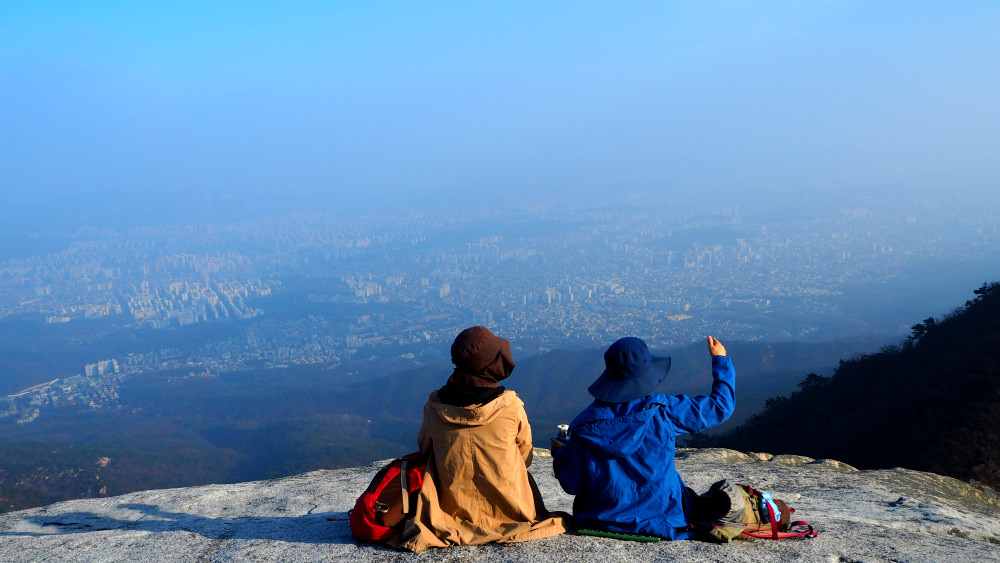 Magnificent views from Baegundae Peak, Seoul
Magnificent views from Baegundae Peak, SeoulSuyudong Course
If you are targeting the summit, you can go to Daedongmun, Mangyeongdae, Uimundae, and Baegundae
- Ballaegol – Galbawi Ridge
- Academy House – Galbawi Ridge or Gucheon Gyegeok – Daedongmun
- Hwagyesa (Temple) – Samsung-am
- Naenggul, Beomgeol – Galbawi Ridge
- Bogwangsa (Temple) or Baegryeongsa (Temple), Eungasa – Jindallae Ridge – Daedongmun
Pyeongchang-dong Course
- Pyeongchang Hiking Support Center – Dongryeong Phokpo (falls) – Ilseonsa (Temple) – (Bohyeonbong) – Daeseongmun
- Pyeongchang Hiking Support Center – Hyeongjaebong – Daeseongmun
- Kookmindae (university) – Jeongneung Hiking Support Center – Galbawi – Sanseongju
Jeongneungdong Course
1. Jeongneung Hiking Support Center – Neolpjeokbawi – Bokukmun
2. Jeongneung Hiking Support Center – Naewonsa (temple) – Galbawi Ridge
3. Jeongneung Hiking Support Center – Sambongsa (temple) – Youngchusa (temple) – Daeseongmun
4. Jeongneung Hiking Support Center – Daeseong Ridge – Daeseongmun
Bulgwangdong and Jingwansa (temple) Course
- Bulgwang Hiking Support Center – Bulgwangsa (temple) – Hyangnobong
- Jingwansa (temple) – Jingwansa Valley – Jakeunnojeokbong – Bibong Ridge
- Samcheonsa (temple) – Samcheonsa Valley – Buwangdongamamun or Bibong Ridge
- Deokbawi Station – Jeokduribong (Suribong)
- Jingwansa – Eungbongneungseon (ridge) – Samobawi
goyang city departure course
Bukhansanseong Course
- Bukhansan Hiking Support Center – Sanseong Valley – Daegosa – Jungheungsa (temple)
- Bukhansan Hiking Support Center – Kuknyeongsa – Gasadangammun
- Bukhansan Hiking Support Center – (Yongamsa or Daeseomun) – Uisangbong – Yongchulbong – Yonghyeolbong – Jeungchoibong – Nawolbong – Nahanbong – 716 Bong (Sangwonbong) – Munsubong – Daenammun
- Bukhansan Hiking Support Center – Sanseong Valley – Jungseongmun – Nojeoksa – Buwangsaji – Samcheonsa Valley – Samcheonsa
- Bukhansan Hiking Support Center – Borisa – Yaksuamteo – Uimun – Baegundae *Wooidong Doseonsa – Baegundae Summit Course
- Bukhansan Hiking Support Center – Sangwoonsa – Wonhyobong – Bamgol Valley: from Wonhyobong Summit you can see Yeomchobong and Baegundae, Mangyeongdae, and Nojeokbong’s sights.
Goyang City Hyojadong Course
- Hyojabi – Sumeunbyeok Ridge – Baegundae back trail – Baegundae Summit
- Publicly Listed Ridge Course
You can go to Yeomchobong Ridge and Bamgol Ridge (Yangcho Bukhang Ridge), but the trails are quite challenging and dangerous for beginners.
Bukhansan National Park has one of the most accident-prone peaks in the country – Baegundae Peak. It has the most accidents not only because it has the most challenging trail but because it has the most number of visitors as recorded in the Guinness Book of World Records.
Many people hike (or climb) it because it is beautiful and a strategic peak where you can view Seoul’s downtown, Incheon, Ganghwa Island, Yongmun Mountain (in Yangpyeong)
Note: Stray cats can be found living on top of Bukhansan Mountain National Park. It is a phenomenon that can be easily understood as these creatures can survive in this environment throughout the four seasons. The number of these cats has increased as they reproduced their kind but feeding only on what they can catch in the mountains, hikers’ extra food, or on some hikers who feed them. Although feeding them is not allowed most hikers took pity on them.
Since you have already learned enough about Bukhansan National Park, you might be interested in hiking it from any point. To help you out, you may use the guides below for your convenience.
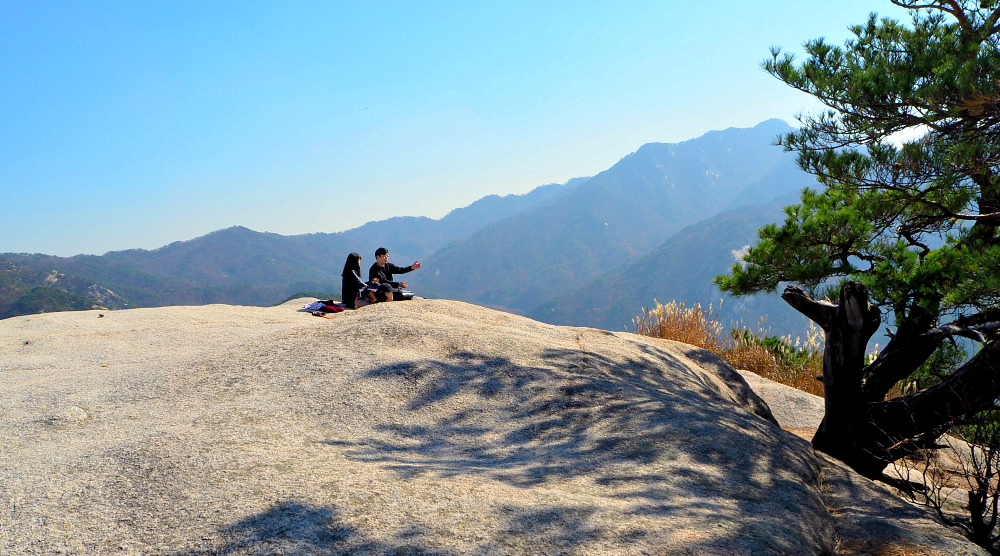 Wonhyobong Peak is one of Bukhansan National Park's best mountains to explore due to its spacious plateau area.
Wonhyobong Peak is one of Bukhansan National Park's best mountains to explore due to its spacious plateau area.contact details
For further information, you may use the following information. These are the officially designated offices for South Korea’s national parks.
Bukhansan National Park Office
Address : San 1-1, Jeongneung-dong, Seongbuk-gu, Seoul
Tel : +82-2-909-0497~8, 918-9063
Fax : +82-2-909-0888
E-mail: pukhan@knps.or.kr
Bukhansan National Park Dobong District Office
Address: 229-104, Howon-dong, Uijeongbu Si, Gyeonggi-Do
Tel : +82-31-873-2791~2
Fax : +82-31-871-7972
E-mail: pukhan_w@knps.or.kr
bukhansan national park facilities
South Korea’s national parks are well-organized and equipped with facilities to support and help hikers enjoy and keep safer. The following facilities can be found at this dedicated website.
National Park Offices and Mountain Ranger Stations
Bukhansan National Park Office: San 1-1, Jeongneung-dong, Seongbuk-gu, Seoul Phone: +82-2-909-0497~8
Bukhansan National Park Northern Office: 229-104, Howon-dong, Uijeongbu Si, Gyeonggi-Do, Phone: +82-31-873-2791~2
Information Centers
Jeongneung Visitor Center: San 1-1, Jeongneung-dong, Seongbuk-gu, Seoul
Jeongneung Information Center: San 1-1, Jeongneung-dong, Seongbuk-gu, Seoul
Parking Lots
- Bukhan Sanseong Parking Lot can accommodate a big number of private vehicles especially cars -around 830/
- Jeongneung Parking Lot. This lot can accommodate up to 120 Cars. Phone: +82-2-917-2562
- Wondobong Parking Lot 1. This lot can accommodate only around 27 Cars.
- Wondobong Parking Lot 2. This can accommodate up to 45 Cars.
rentals & fees
The peak season for Bukhansan starts from May to
December. It means that the fees and rentals for the parking lots,
campsites, shelters, and other facilities increase during these months.
For example, for a campsite, an adult pays 2,200 KRW during off season
but raises to 2,700 KRW during peak season.
Aside from the above
facilities, Bukhansan National Park also offers photo taking for profit
for the local government. Such photo taking includes photo shooting and
filmings – such as films, TV dramas, C.F., and VTR.
lodging
If you are looking for a place to stay, aside from camping, you can also avail affordable rooms at some select place only. For example, you can choose the below properties:
Academy House
Address: San76, Suyu-dong, Gangbuk-gu, Seoul
Phone: 82-2-3499-7500
Bamnamu Garden
Address: 240-1, Ui-dong, Gangbuk-gu, Seoul
Phone: 82-2-993-4691
Hanmijang
Address: 306, Ui-dong, Gangbuk-gu, Seoul
Phone: 82-2-993-1013
Eating
Also, depending on your trail choice, you can have more proper meals before or after your day’s hiking by availing the services of some restaurants (eateries, cafes) at some specific sites near the mountain. Such are the following…
Ui Sanjang (serves duck dishes, raised at the restaurant’s farm)
Address: 324-1, Ui-dong, Gangbuk-gu, Seoul
Phone: 82-2-999-9119
Yetgol Toseong (services barbecue dishes using a patented stove)
Address: 216-43, Ui-dong, Gangbuk-gu, Seoul
Phone: 82-2-990-9292
Sigolgil (serves varied delicious Korean dishes)
Address: 282-1, Ui-dong, Gangbuk-gu, Seoul
Phone: 82-2-994-8989
Jingogae Hanjeongsik (serves traditional Korean dishes with natural ingredients)
Address: 229-272, Howon-dong, Uijeongbu Si, Gyeonggi-Do
Phone: 82-31-873-4100
Dubu Hanmadang (serves its specialty dish – savory tufus)
Address: Jingwanoe-dong, Eunpyeong-gu, Seoul
Phone: 82-2-381-6979
Hope this helps your search and useful for your travels or hiking plans at Bukhansan National Park.
- Home
- Korea National Parks
- Bukhansan Mountain
Get Exciting Activities
Book one of our exciting activities today to experience the thrill of a lifetime! Take advantage of this opportunity and secure your spot in advance.
Hotel Map Guide
Find your affordable, accessible, and comfortable hotel in Seoul at Agoda.Com. See the hotel map below...
Hotel Booking Guide
Find affordable and amazing hotels on Agoda.com using the search box below. Book now to enjoy great discounts and save!
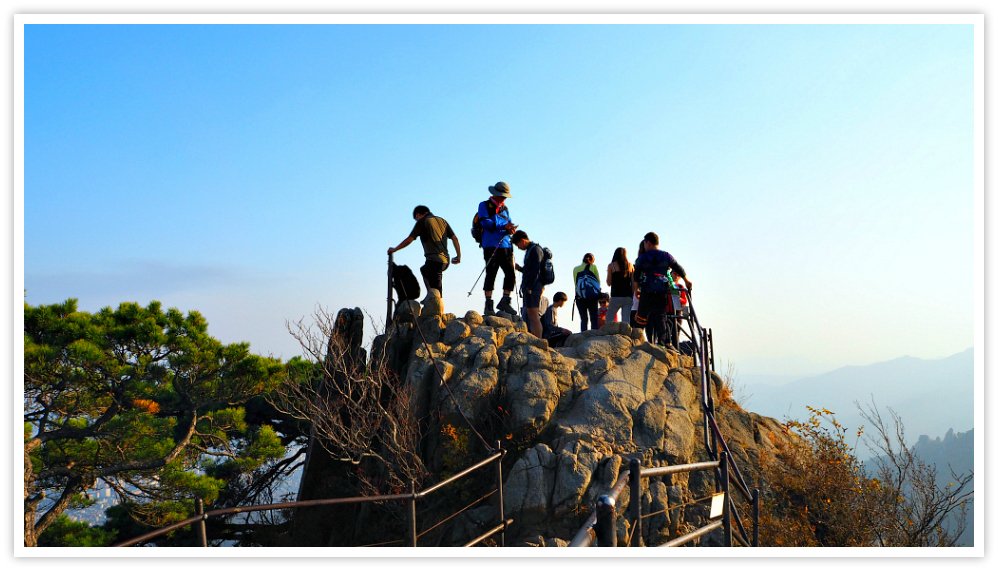
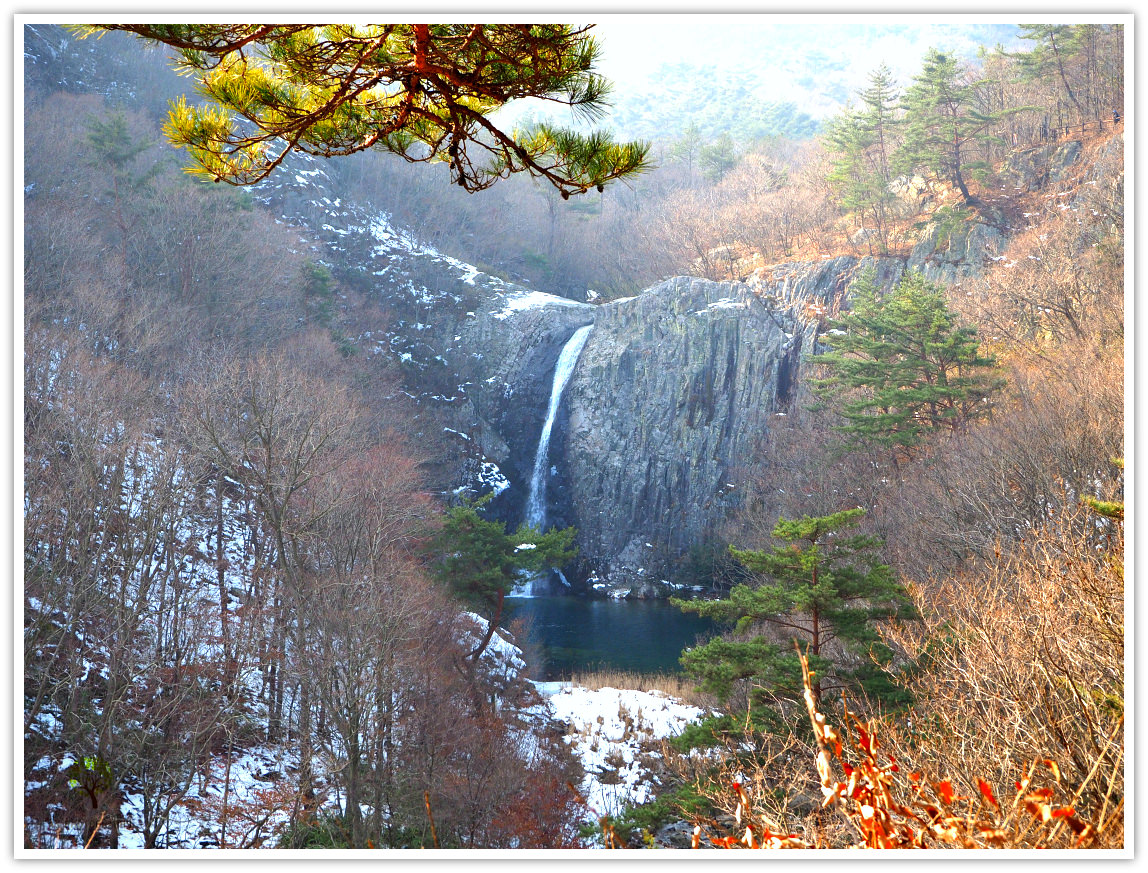
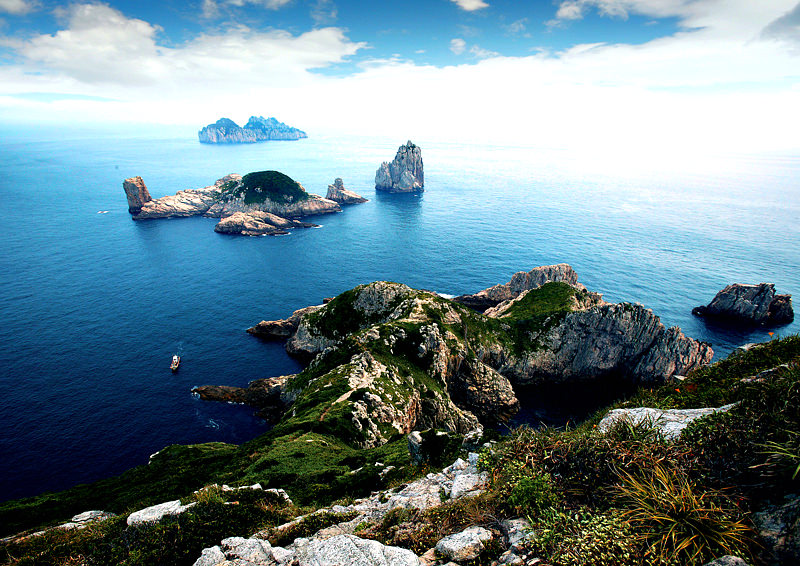




New! Comments
What do you think about this page? Leave me a comment in the box below.